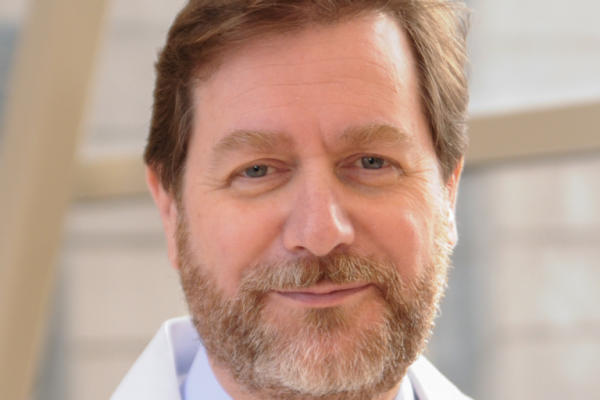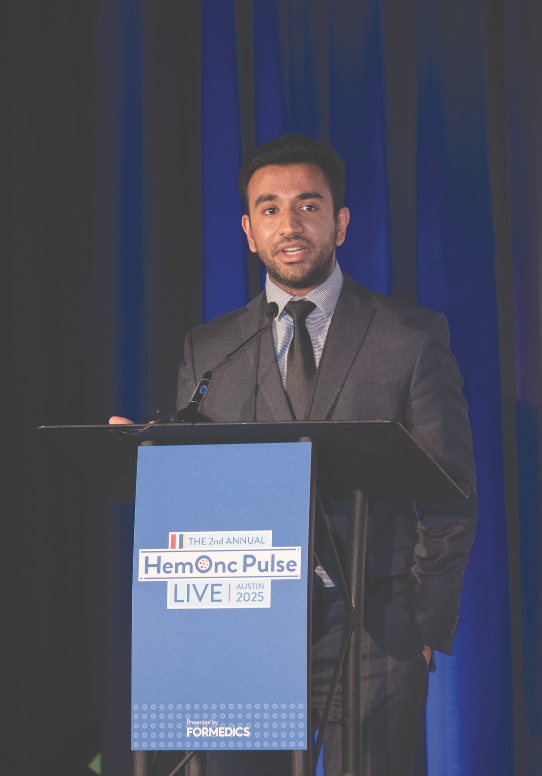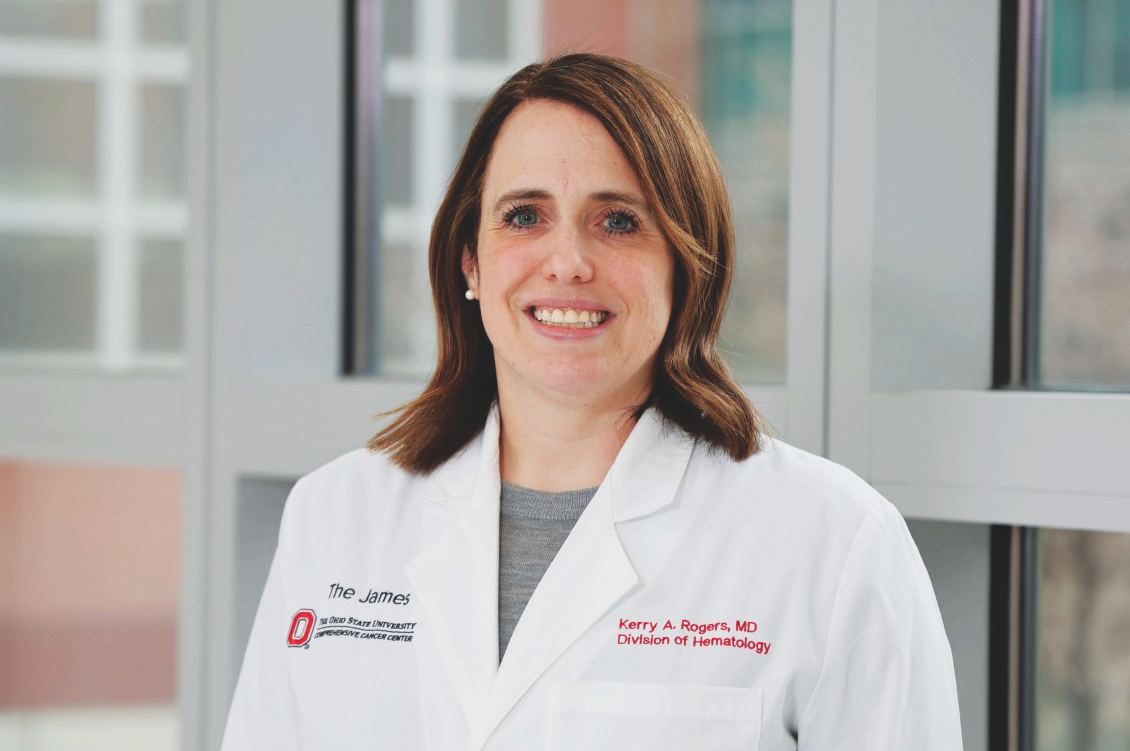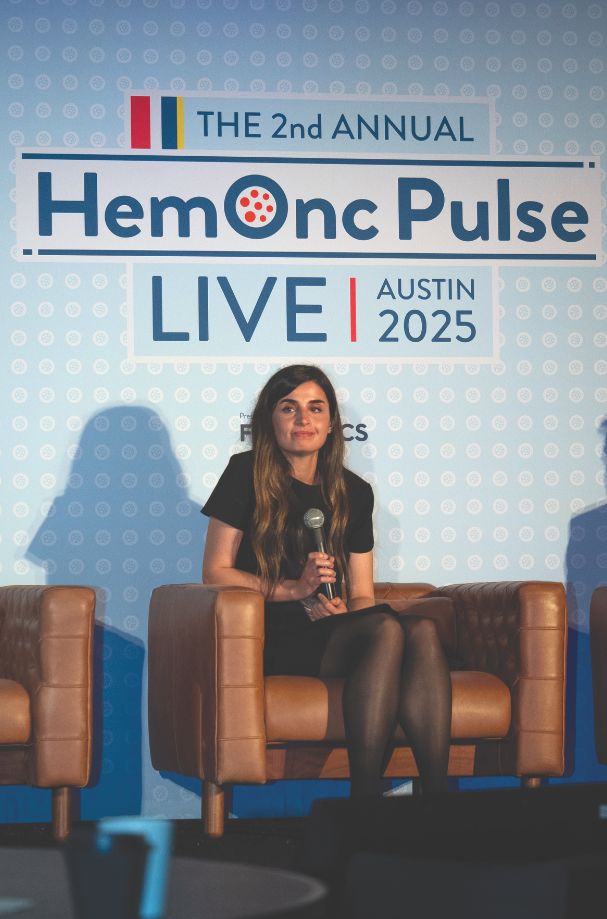
Pierluigi Porcu, MD, Professor of Medical Oncology and Director of the Division of Hematologic Malignancies and Hematopoietic Stem Cell Transplantation at the Sidney Kimmel Cancer Center, Thomas Jefferson University, discusses how he nearly became a historian instead of a doctor, why mentors are so important, and how biking can be therapeutic.
When did you know you wanted to be a doctor? After high school, I wanted to pursue an education in the humanities. I changed my mind, in part, because of my family who pushed hard for me to go into more of a practical profession. I decided to go to medical school. When I was there, I struggled initially to catch up on my inadequate science background, but then I started really enjoying the research part of it—the science, the logic, the rational approach to disease, how to build evidence-based medicine.
This was at the University of Turin in Italy, which is a large university with a very long tradition of biomedical research. There were plenty of opportunities for electives in basic science, and I took many of them. I always looked around for more things to learn, and I developed a strong interest in immunology and virology, because there were some very good teachers and mentors. During the last two years of medical school, I joined the laboratory of immunogenetics. I was fortunate to work with a very supportive research team on my experimental thesis on the production and characterization of a monoclonal antibody against human lymphocytes.
What would you do for a living if you weren’t a doctor? I probably would be a historian, because I am fascinated by how human events originate, shape, and evolve. History is about learning what people did and why they did it. There’s a lot of discovery and detective work in historical research that is similar to medicine.
How did you choose hematology as a specialty and lymphoma specifically? Hematology came about after graduating from medical school when I went to work in a different lab, run by Dr. Luigi Pegoraro, a well-known basic science hematologist. At that time, I was also working as a doctor part-time in my home town of Vercelli, trying to make a living, because all research positions were unpaid. I started working in a hematology research laboratory at the University of Torino. I already had some interest in blood development and blood cancers and was looking to expand my knowledge and understanding of those disorders. In that lab, I started working on leukemia—in particular, the factors that regulate the growth and survival of leukemia cells.
After two years, it was clear that I wanted to pursue an academic job, but there were no options at the University of Torino, so my mentor advised me to go to London for a summer course in hematology as a way to explore and network. The two leaders of the course, which was at Hammersmith Hospital, were Drs. Lucio Luzzatto and John Goldman. Dr. Luzzatto advised me that job opportunities in the United Kingdom were not great (that was before the integration of the European Union) and I should try my luck in the United States. Dr. Pegoraro connected me with Dr. Renato Baserga at Thomas Jefferson University in Philadelphia, which is where my biomedical career in the United States began.
I started more of a classical clinical training in the United States. I went for an internship and residency at Indiana University. That’s really when I developed my interest in lymphoma. I also had the unique opportunity to spend a year of my fellowship in the laboratory of Dr. Hal Broxmeyer, who sadly passed away recently and was one of the world leaders in hematopoietic stem cell biology and the undisputed pioneer of cord blood stem cell transplantation, a field that he essentially built from the ground up. At Indiana University, I also learned from a number of clinical mentors, including Drs. Larry Einhorn, Patrick Lohrer, Craig Nichols, and Larry Cripe. They taught me the importance and impact of clinical research and showed me how to conduct cancer clinical trials.
Did you struggle to find your focus? That’s the one thing I never struggled with. I was initially interested in leukemia biology in the laboratory, and I knew that I wanted to focus on blood cancers in general. Then I realized lymphoma was what I was most interested in. When I started taking care of patients with lymphoma, I realized that there was a great need to achieve a better understanding of the disease and develop new treatments. Part of my motivation to work on blood cancers also came from the fact that several members of my family developed leukemia and lymphoma.
What do you think makes a good mentor? A good mentor is someone who spends time with you. A good mentor is someone who, in general, you can look up to, someone who has been successful in doing the things that you want to do. During that interaction and dialogue, that person really takes the time to show you the things that you should do right, as opposed to just telling you.
Also, that person should take the time to guide you and tell you what you are doing wrong, the mistakes you’re about to make. To find which mistakes people are making really requires time, observation, and honest communication. I always tell people that mentoring is a two-way street and requires dialogue. Mentors also learn from their mentees all the time.
How do you interact with mentees now? A good mentor is also like a good coach. Good players need to be cultivated and supported in their growth. One has to assess each person’s potential and find the right way to help. Productive mentoring also requires the ability of the mentee to listen, act on the advice, and have self-motivation and self-initiative.
What are the next steps in lymphoma research? What are the next questions that need to be answered to get to a cure? Sometimes it’s important to focus on the big picture. First, I think we have to understand that lymphomas, like other cancers, are very heterogeneous. What is true for a certain type of lymphoma may not be true for the next one. Appreciating the full spectrum of these cancers is important to understand where they come from.
I can think of three specific areas where we urgently need to make progress.
The first is that we still know very little about the mechanisms that promote and lead to the early development of lymphoma in patients. When does the process start and how soon can we detect it? We know near to nothing about the genetic and environmental factors, particularly those that can be tested for or avoided. For example, we know that lymphomas can cluster in certain families, but we do not know the genes responsible for driving that risk, so we cannot do effective genetic testing in high-risk families. We also know that some lymphomas are triggered and driven by certain viruses, but only some individuals are susceptible to the risk of virus-induced lymphomas. Because of this lack of knowledge, particularly regarding the avoidable risk factors, we don’t have good ways to screen for early lymphoma development, even in patients we know have a higher-than-average risk of developing lymphoma, such as those who are immunocompromised.
The second big question is: What are the molecular drivers of lymphoma in individual patients at different time points during their disease and how do treatments affect them? What are the molecular mechanisms that support the growth and proliferation of lymphoma before treatment and then drive the progression and expansion during the disease’s natural history? For example, when the lymphoma is diagnosed, what are the primary drivers of the lymphoma at that point? What about when people go through treatment and the lymphoma comes back? We suspect that the molecular drivers of lymphoma at those different time points are different, because they go through evolution and selective pressure from the treatment. We have little idea of what those different drivers are and how to address them. For example, treating a certain lymphoma after three prior treatments obviously is different than treating the lymphoma when it’s first diagnosed. We don’t quite have the longitudinal landscape and mapping to know how to navigate those different vulnerabilities in individual patients.
The third area, linked to the second, is how to personalize treatments to enhance the chances that any lymphoma treatment in a particular patient leads to the best outcome. Some patients respond very well. Some patients don’t. What is the tumor environment in any particular patient that leads to that immunotherapy working well for patient A and not working well for patient B?
How do you spend your time outside of work? I like to do three things. I love to bicycle, particularly long-distance rides. It’s almost psychotherapy in addition to keeping you fit. The second is I like to play guitar; I’m a good beginner. I also love books and reading, particularly books about history and political philosophy.
The people I spend most of my free time right now is my family. I don’t have a whole lot of free time, so I like to spend as much time as possible with them. I have four kids, two of whom are married.
Last question: When you’re biking, do you listen to anything in particular? When I ride, I enjoy the silence—or pay attention to the noise, which is also important. I don’t listen to anything for two reasons. One is that it can be a little distracting, and biking can be dangerous if you don’t pay attention to your surroundings. Bikers can get killed on the road, so you have to be careful and listen to what is coming behind you. The other is that I listen to my own mind. That’s why I think it is therapeutic, because a lot of the thinking I do, a lot of the ideas I have, come to me when I’m biking. That’s one important way for me to collect my thoughts and meditate. At the same time, biking is a very good way to stay connected with the physical world of the senses, particularly during long rides on the back roads. Biking is at the core of my mind-body connection experience.
Pierluigi Porcu, MD, is affiliated with the Sidney Kimmel Cancer Center at Jefferson Health, Thomas Jefferson University, in Philadelphia. He can be reached at pierluigi.porcu@jefferson.edu.






 © 2025 Mashup Media, LLC, a Formedics Property. All Rights Reserved.
© 2025 Mashup Media, LLC, a Formedics Property. All Rights Reserved.